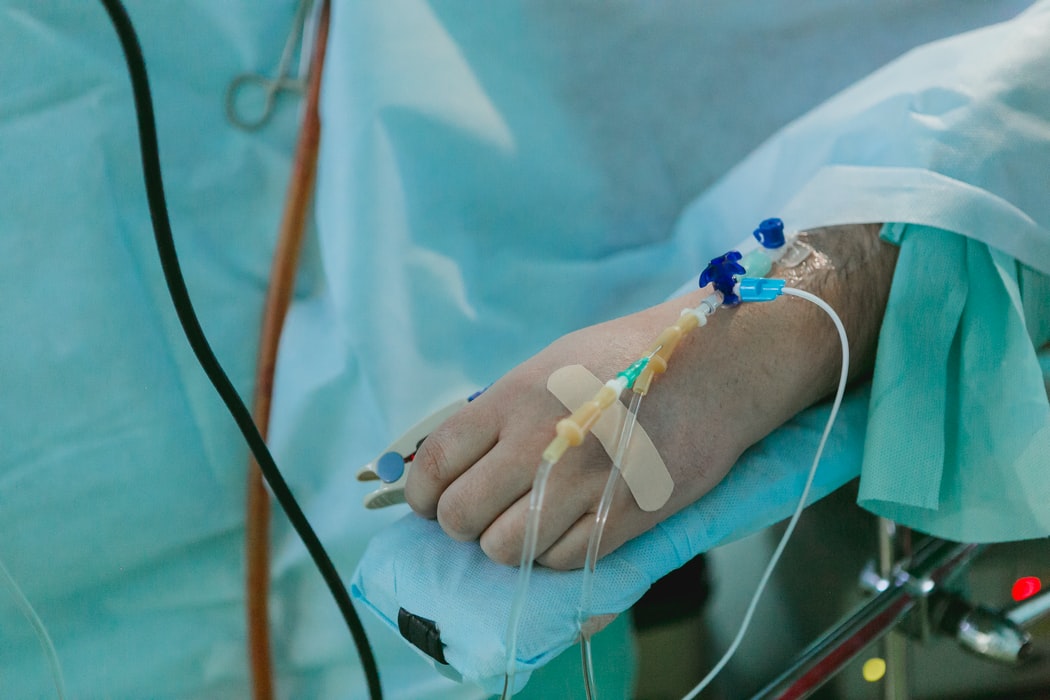5 Benefits of Ambulation for Bed-Ridden Patients
Sep 15, 2021 17:24

Ambulation is defined as the capacity to move with or without any support or assistive device. It is commonly used to describe a patient's post-surgery or physiotherapy goals. A bed-ridden patient is someone who is either too sick to get out of bed, too weak and fragile to move without assistance due to old age, or who has a physical disability that hinders them from walking independently and needs to remain in bed.
When patients cannot ambulate regularly and adequately, they are at risk of developing pressure ulcers, muscle atrophy, and deep vein thrombosis that can cause blood clots. It could even increase the susceptibility of having pneumonia. All of these and a lot more are easily avoided with proper ambulation. Hence, this article will discuss the benefits of ambulation to prevent the said consequences.
Avoid Developing Pressure Ulcers
Pressure ulcers can be caused by sitting or sleeping in almost the same position over long periods. When the body's weight lies excessively within the same pressure areas, blood circulation to those regions is reduced, resulting in pressure ulcers.
The skin and muscles that are starved of oxygen tend to perish and get diseased over time. These sores may grow extensive, severe, agonizing, and difficult to heal, all of which could have been prevented by proper ambulation.
If ambulation is not possible without assistive devices, make sure to provide the appropriate one for the patient. You can find out more at https://www.activemobility.com.au/patient-lifting/ceiling-hoist/ about such types of equipment. However, if the patient is immobile even with assistance, here are some tips to follow to avoid pressure ulcers.
● Move the patient every 2 hours in a different position.
● Any type of cushion should be placed between the body that frequently rubs against one another—for example, the knees and thighs.
● Regularly inspect regions where pressure ulcers are common, such as the ankles, back, and hips.
● Keep the skin dry and free of dirt.
● Periodically change the linens.
It Can Increase Muscle Strength
The importance of exercise and movement in human health cannot be overstated. Insufficient physical activity decreases muscle contraction and strength, resulting in muscle atrophy. Ambulation is one method to avoid muscular atrophy caused by extended immobility for various causes. Ambulation may range from sitting on the side of the bed to trying to walk with the assistance of assistive devices.
Muscle strength and contractility are increased because ambulation helps with circulation. The blood can travel freely in the body with proper circulation, providing nutrients to the cells and muscles, avoiding muscle hunger and atrophy.
It Aids in the Healing Process
Suppose the patient is confined in bed because they just got out of surgery. In that case, ambulation can naturally help heal the incision. You might think it is horrible to have a patient moving after an invasive procedure, and it would just cause further pain. Still, as mentioned above, ambulation helps in blood flow.
Aside from improving blood circulation and oxygen levels, early ambulation post-surgery also decreases the risk of complications, such as blood clots. It promotes the healing process, strengthens bowel and respiratory function, improves the desire to eat, and sometimes even improves mental health, allowing patients who perform early and continuous ambulation to recover and be discharged quickly.
It Prevents Constipation
Constipation is caused by different factors, one of which is being inactive. Exercise reduces the time required for food to pass through the intestinal tract, which helps with constipation. It reduces the quantity of water absorbed by the body from the fecal matter.
In addition, ambulation also increases cardiovascular and respiratory rates—this aids in the normal contraction of the patient's muscles, making the squeezing of the stomach muscles assist in getting the stool out faster.
Constipation may be relieved simply by getting up and walking. Walking for 10 to 15 minutes a few times a day, for example, may assist the body and gastrointestinal system in functioning at their optimum. The best time to do this is an hour after the meal has been served.
It Can Boost the Mood of the Patient
A bed-ridden patient is prone to depression and feelings of despair, as they feel like they are not out there doing the best they can. As blood flow improves, ambulation stimulates various brain changes, including neuronal development, decreased irritation, and new activity levels that enhance sensations of tranquility and peace.
It also makes the brain produce endorphins, a vital hormone that revitalizes and brightens up a patient's day. Finally, it may also function as a diversion, enabling the patient to have some quiet time to interrupt the loop of negative thinking that contributes to stress.
Takeaway
The care given to bed-ridden patients is crucial because there are many health risks that they can succumb to. Having them ambulate once or a few times a day can significantly reduce the complications of being in bed all day. Ambulation is not just for improving physical health but also for a patient’s mental well-being, so try to get up and get walking.







































































